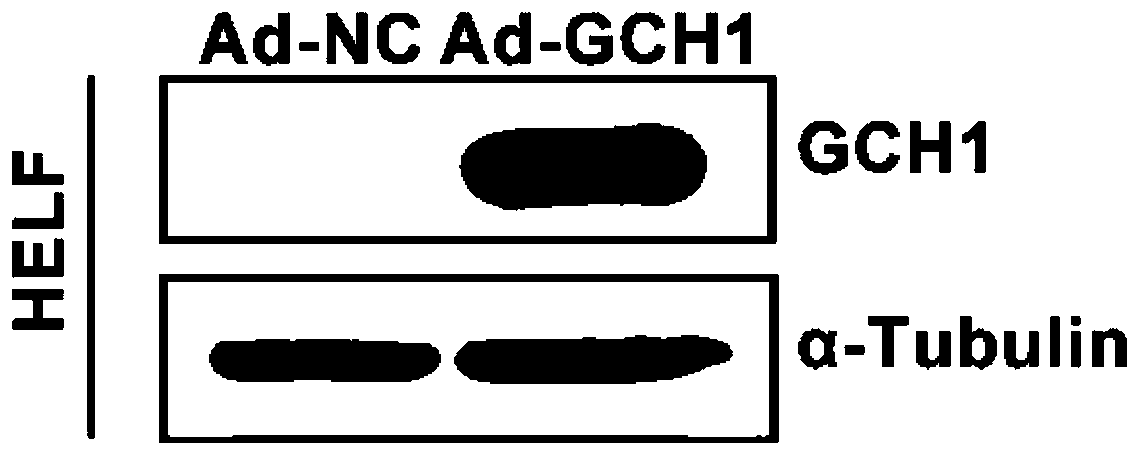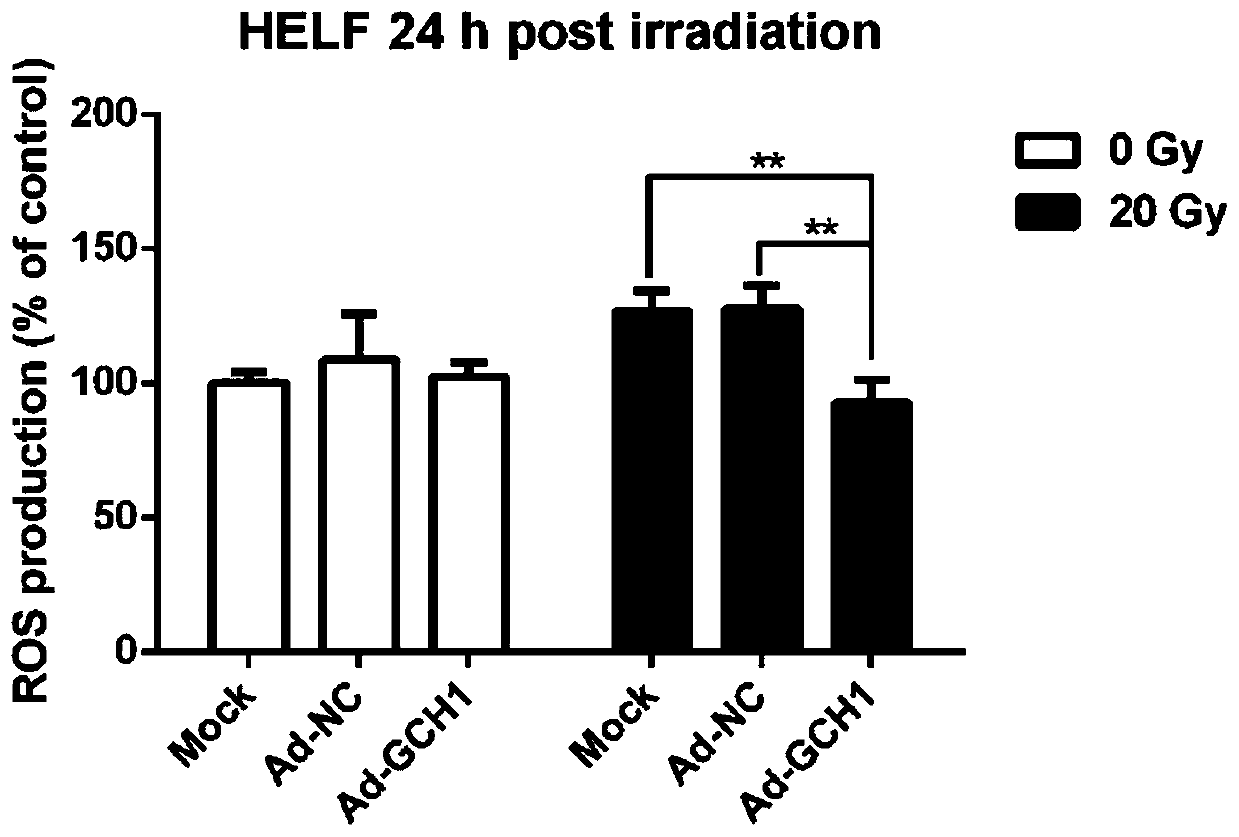Application of guanosine triphosphate cyclohydrolase 1 and drug
A technology of guanosine triphosphate and hydrolase, which is applied in the biological field to achieve the effect of enhancing cell proliferation ability
- Summary
- Abstract
- Description
- Claims
- Application Information
AI Technical Summary
Problems solved by technology
Method used
Image
Examples
Embodiment 1
[0034] Example 1 Construction of GCH1 overexpression adenovirus and expression verification after infection
[0035] In this example, the whole gene synthesis method (Shandong Weizhen Biotechnology Co., Ltd.) was used to synthesize the human GCH1 coding region gene (the nucleic acid sequence is shown in Table 1 below), and the target fragment was cloned into the AdTrack-CMV shuttle plasmid, and the adenovirus backbone was used to Plasmid pAdeasy-1 was subjected to homologous recombination in BJ5183 bacteria, and positive clones were selected to transfect 293A cells with small plasmids. The pAd-GCH1 (target adenovirus) and pAd-NC (control adenovirus) recombinant adenoviruses were obtained through packaging.
[0036] Table 1 The sequences of primers and genes
[0037]
[0038]
[0039] Human embryonic lung fibroblasts HELF in the exponential growth phase were mixed with 10.0×10 4 Cells / well were seeded in a 6-well plate, and 2 μL of 1×10 12 vp / ml GCH1 overexpression ade...
Embodiment 2
[0040] Example 2 Anti-radiation effect test of GCH1 overexpression adenovirus on lung cells
[0041] 1. GCH1 overexpression adenovirus reverses NO reduction induced by ionizing radiation
[0042] Human embryonic lung fibroblasts in exponential growth phase were seeded in 96-well plates and cultured for 12 hours, and Ad-NC or Ad-GCH1 adenovirus was added 24 hours before irradiation, respectively. Each group had 4 parallel samples, and the experiment was repeated 3 times. Afterwards, X-ray irradiation with an absorbed dose of 20Gy was given. Aspirate the medium 24 hours after exposure, add 100 μL of diluted DAF-FM DA to each well (dilute DAF-FM DA with DAF-FM DA diluent according to 1:1000, so that the final concentration is 5 μmol / L), and place in the incubator Incubate for 20min. Wash three times with PBS to fully remove DAF-FMDA that did not enter the cells. Detection by microplate reader.
[0043] Such as figure 2 As shown (P<0.05), the results showed that the GCH1 ov...
Embodiment 3
[0050] Example 3 GCH1 overexpression adenovirus anti-radiation effect test on mouse lung tissue
[0051] Male C57 mice aged 6 to 8 weeks were purchased from Shanghai Slack Experimental Animal Co., Ltd., and each mouse was anesthetized by intraperitoneal injection of 4% chloral hydrate according to 1% of its body weight, and small animal positioning was performed using a small animal precision irradiation device Afterwards, the right lung was precisely irradiated with an aperture of 5mm, so that 100% of the volume reached the prescribed dose of 20Gy, and a mouse radiation-induced lung injury model was established, and then the mice were randomly divided into 2 groups (5 in each group):
[0052] 1) Give mice a tail vein injection of 100 μL of 1×10 12 vp / ml GCH1 overexpression adenovirus; 2) inject 100 μL of 1×10 12 vp / ml GCH1 control adenovirus (Ad-NC).
[0053] After 7 days of irradiation, C57 mice were sacrificed by cervical dislocation. The right lung tissue was taken, rin...
PUM
| Property | Measurement | Unit |
|---|---|---|
| molecular weight | aaaaa | aaaaa |
Abstract
Description
Claims
Application Information
 Login to View More
Login to View More - R&D Engineer
- R&D Manager
- IP Professional
- Industry Leading Data Capabilities
- Powerful AI technology
- Patent DNA Extraction
Browse by: Latest US Patents, China's latest patents, Technical Efficacy Thesaurus, Application Domain, Technology Topic, Popular Technical Reports.
© 2024 PatSnap. All rights reserved.Legal|Privacy policy|Modern Slavery Act Transparency Statement|Sitemap|About US| Contact US: help@patsnap.com










